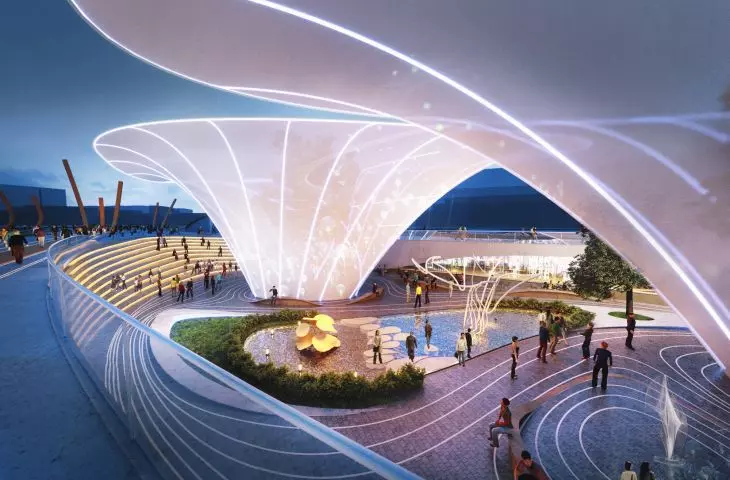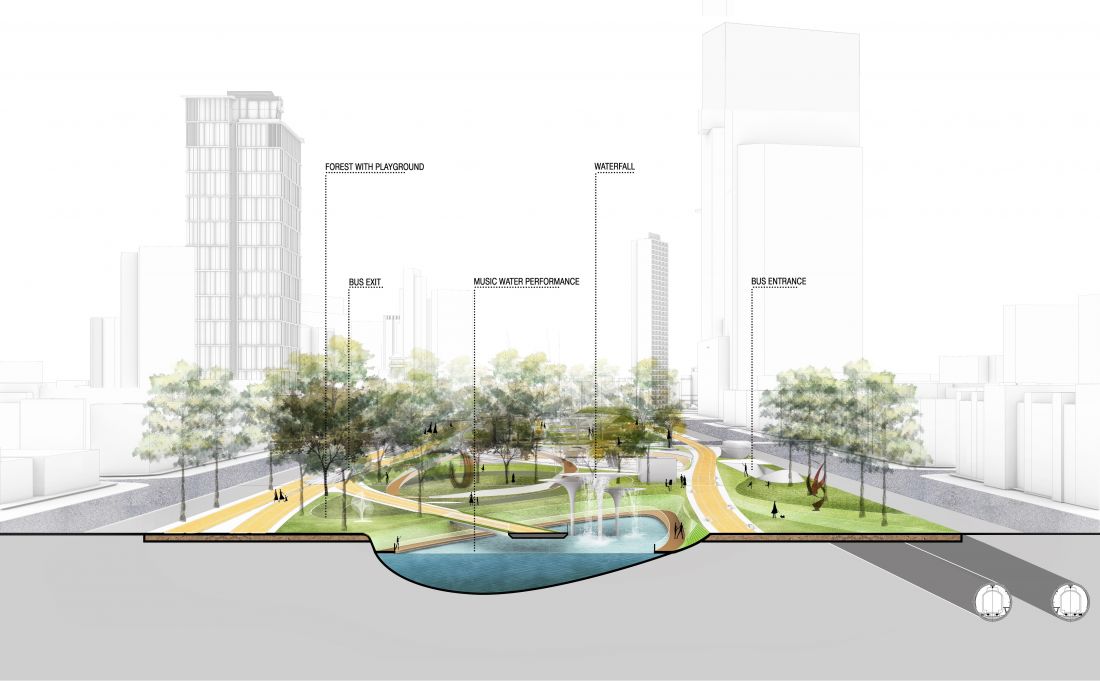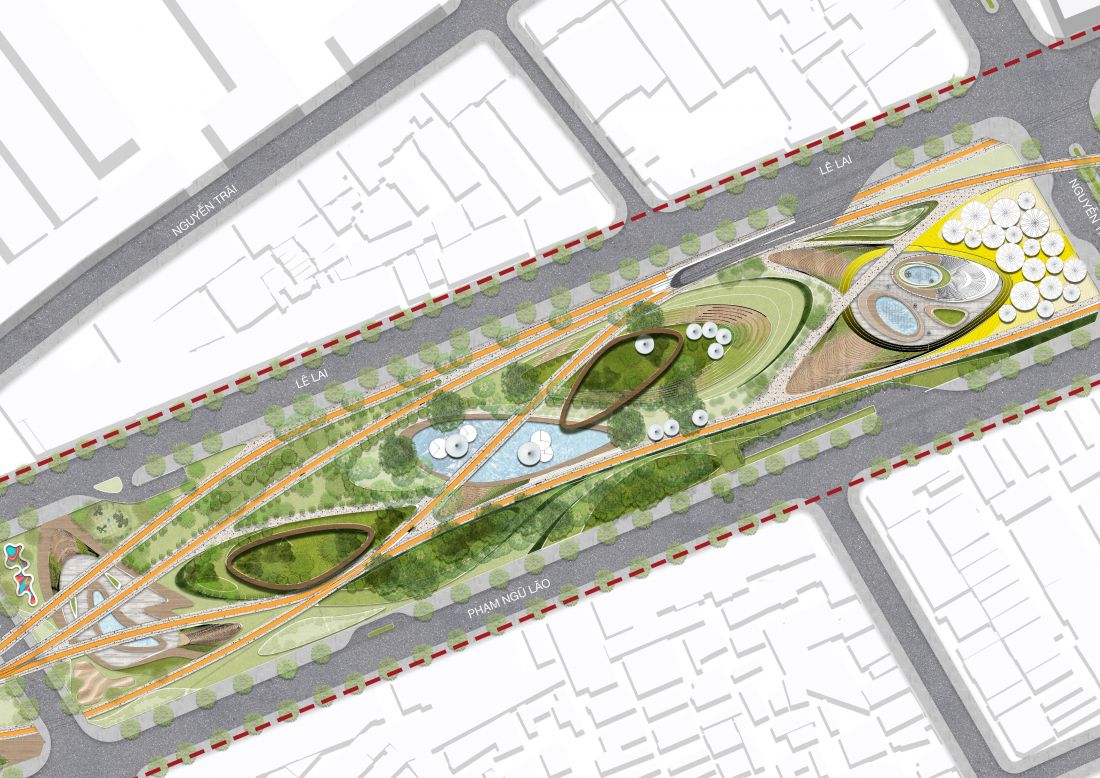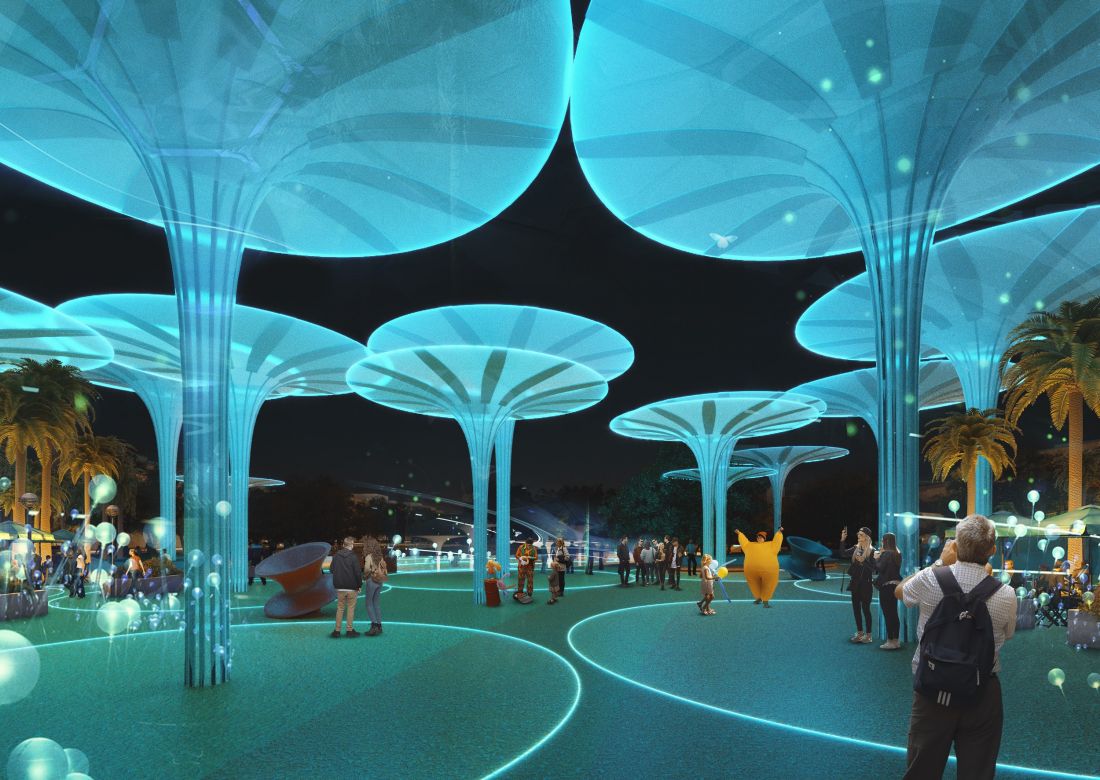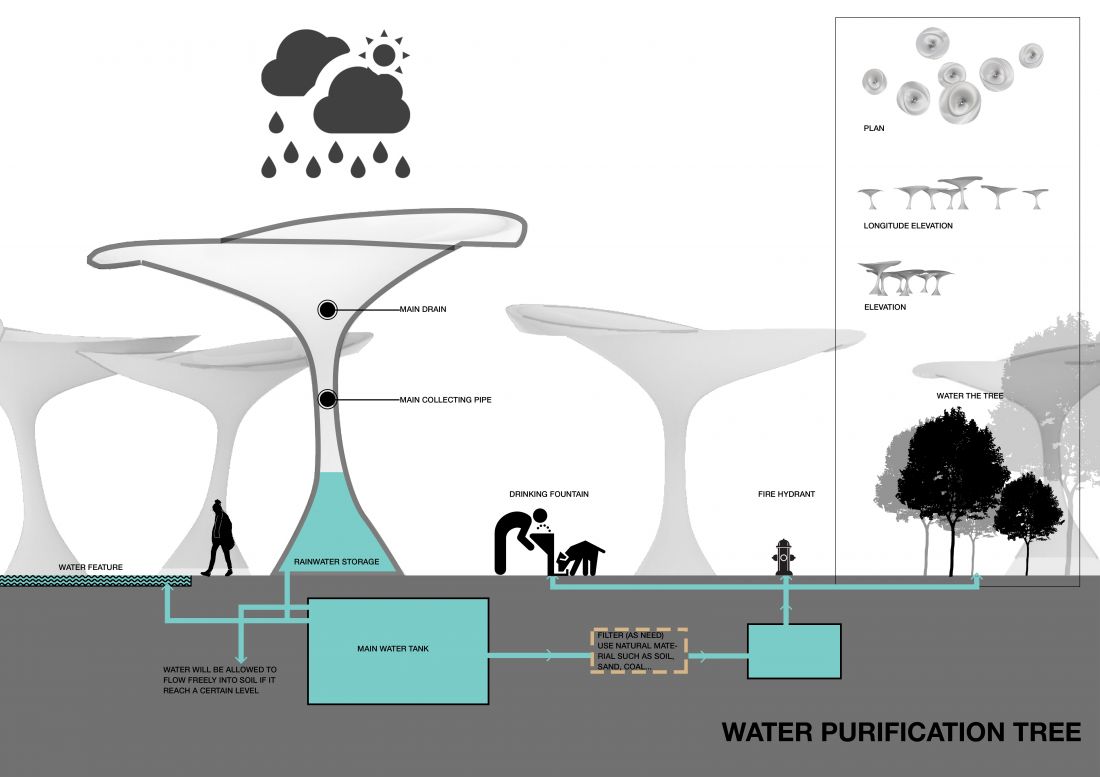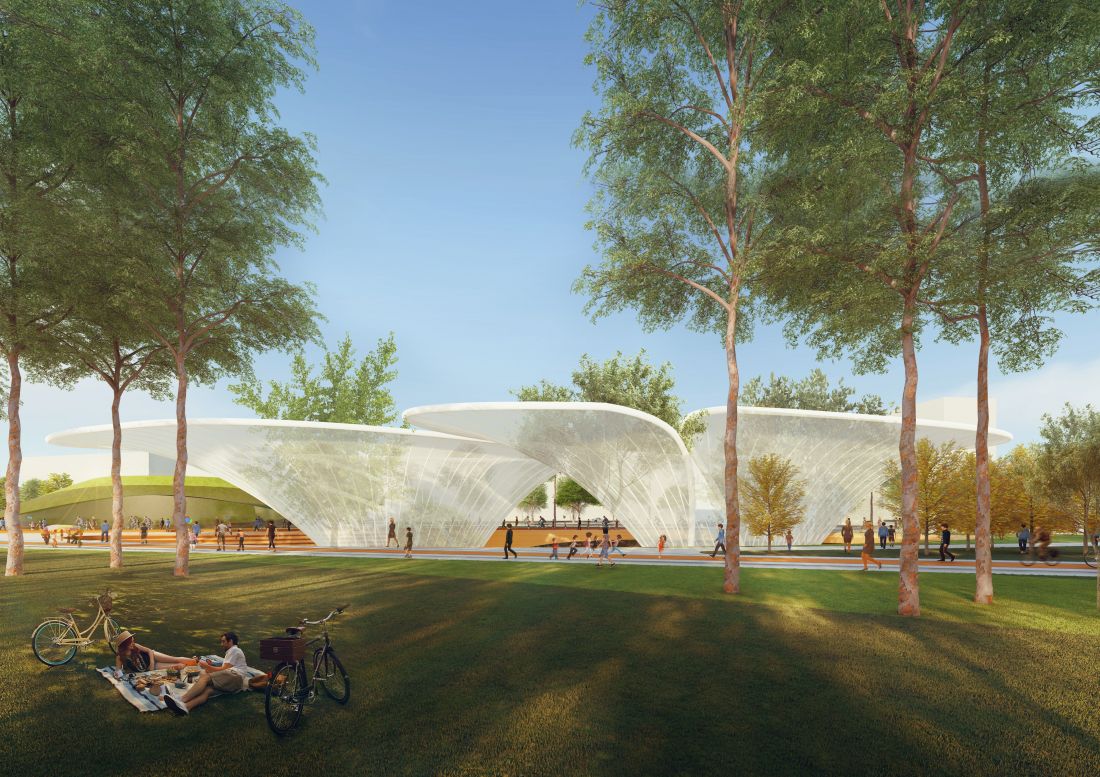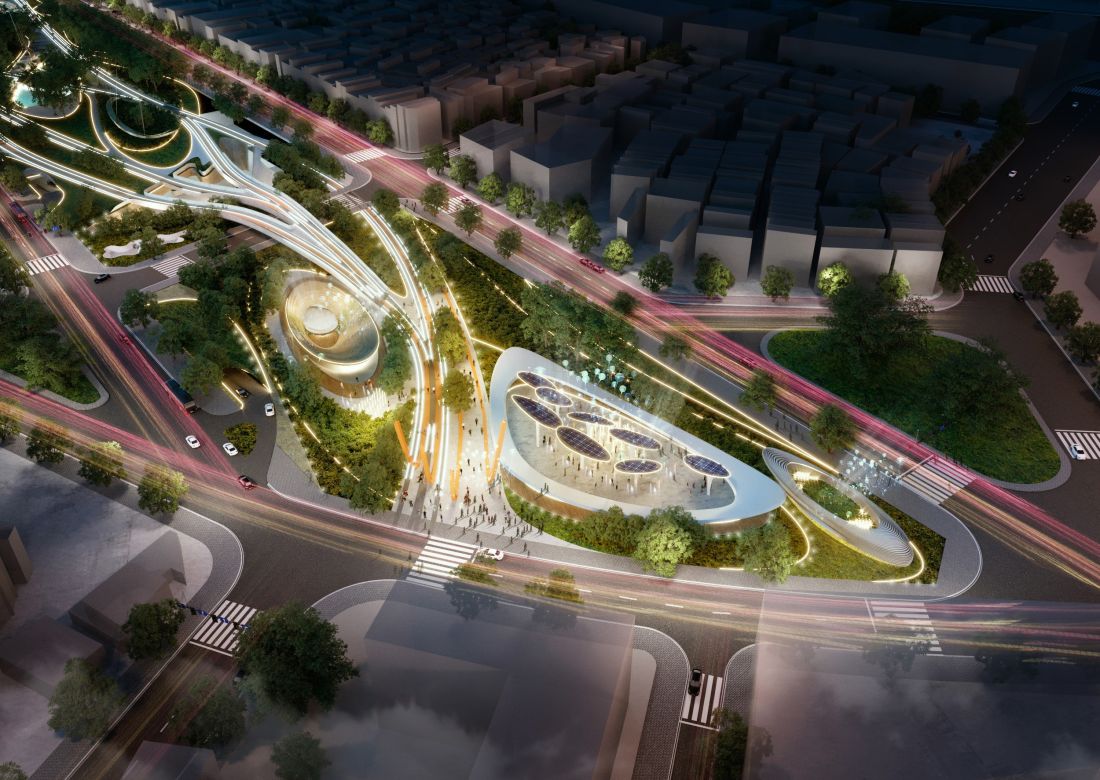Central Park in Ho Chi Minh City,
design: LAVA
The LAVA studio, in cooperation with ASPECT Studio, has won an international competition to design Central Park in Ho Chi Minh. The construction, which will begin in 2020, will create a modern recreational space that combines the city's history with innovative architectural solutions. The design refers to the former railroad tracks and introduces ecological and technological elements, in line with the development of Vietnam's modern architecture.
Aerial view of the city park with paths, greenery and umbrella-like structures surrounded by city buildings ,
Photo: © LAVA , Photo: © LAVA
Multifunctional paths in urban space
One of the distinctive elements of the design are the gently raised, winding pedestrian paths, which follow the pattern of 19th century railroad tracks built by the French. The lowered gardens will create a space for events and entertainment, and will also connect to an underground shopping center that will have direct access to the new Ben Thanh subway station. Artificial trees in the park will act as a shield from the sun, while also collecting water and energy.
This place has always been associated with transportation. The first train station in Southeast Asia was here, there is now a bus station, and soon there will be Vietnam's first metro station. Our project draws on this history and the future of mobility. The park, known locally as "September 23 Park," is also the site of an important annual spring festival.
said Chris Bosse, director of LAVA
A cross-section of the urban park with trees, paths and a water feature,
drawing: © LAVA , drawing: © LAVA
historical inspiration—19th-century railroads as a leitmotif
The design uses patterns reminiscent of old railroad lines, which relate to the old layout of the city and create pathways. This facilitates access to different functional zones and organizes activity areas and creates plenty of space for greenery. The paths in the park end with a striking steel sculpture that alludes to the history of transportation.
Aerial view of the cityscape plan with roads, green areas and geometric elements,
drawing: © LAVA , drawing: © LAVA
new meeting and activity spaces
The park's design combines active and quieter spaces. It will include sculpture gardens, outdoor art galleries, water installations, pavilions for musical and theatrical performances, a skatepark, sports zones, playgrounds, forests and waterfalls. The commercial spaces are designed to attract visitors both during the day and at night.
Futuristic outdoor space with glowing blue artificial trees at night and people interacting,
Photo: © LAVA ,Photo: © LAVA
Technology in the service of greenery—artificial trees and water recycling system
The landscape is complemented by artificial plants. Special "water purification trees" collect rainwater, which is recycled for irrigation, drinking water fountains and hydrants. In turn, "ventilation trees" help lower temperatures and produce fresh air. "Solar trees" are equipped with solar panels that collect energy. On their structures will be information screens, charging stations and WiFi routers.
Conceptual diagram of a water purification system including tree-like structures that collect rainwater,
drawing: © LAVA , drawing: © LAVA
A new chapter in urban transportation while transforming the landscape
We designed the park with people in mind. We focused on a variety of activities that can be experienced in a world-class park that will respond to the needs of the community, both in daily life and during major events. Following the example of other world-class parks, our design combines the future with respect for the past and local culture.
says Steven Buckle, director of ASPECT Studio
Park with trees, green lawn and modern white structures,
Photo: © LAVA ,Photo: © LAVA
The LAVA project transforms this urban oasis into an informal space, with an emphasis on user experience and building a place that responds to 21st century challenges such as social and environmental sustainability. Our proposal avoids formal, rigid layouts, offering instead a design that is multifunctional, welcoming and adaptable. We are thrilled to have won this competition and to be able to create an authentic place that connects the past and the future, man, nature and technology. The subway will open a new chapter in urban transportation, and along with the revitalization of the park, will enhance the quality of life, which is crucial for an international city.
emphasizes Bosse—co-author of the project
An aerial view of the modern city park at night with illuminated paths and unique oval structures,
Photo: © LAVA ,Photo: © LAVA
The design of Ho Chi Minh's Central Park, developed by the LAVA architectural firm in cooperation with ASPECT Studio, harmoniously combines modern architecture with ecological solutions. The introduction of greenery, water elements and innovative technologies will make the park a space for social integration, recreation and environmental education. It is a place that will improve the quality of life of residents by offering them modern and accessible public spaces, connecting the past with the future and man with nature.
Elaborated: Natalia Ledzianowska
Illustrations provided courtesy of LAVA studio.







